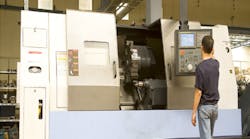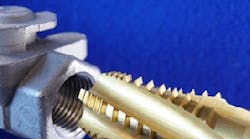CNC machining continues its development into a competitive global business, essentially due to range of machine shops operating in most regional markets, and their access to globally established process technology. In particular, it’s increasingly the case that better-equipped shops are operating in markets with very low labor rates. As a result, CNC shop owners and managers must consider every opportunity for cutting operating costs, in order to offset the advantages of competitors elsewhere in the world.
There are four specific ways that CNC machine shop owners and managers can work to reduce costs, resulting in better overall profitability:
The first cost to address is raw materials: Determining the total requirements of the organization may reveal it is possible to achieve savings with bulk purchases of common materials. Another approach may be to place a blanket order along with scheduled releases.
Still another way to reduce material costs is by purchasing the material drops from the raw material vendor: raw material companies supply most of their customers with the cut-to-length material from full-length bars, so the left-over lengths are often discounted.
The second area for possible cost involves tooling, usually a major expense for CNC machining operations. A shop can purchase carbide inserts in large volumes, or it can place blanket orders with an assurance of regular releases. This would allow the buyer to take advantage of volume discounts.
Another cost-cutting possibility for tooling purchases is to adopt more effective cutting and sharpening practices, to prolong tool life.
Another option is to shop for cheaper CNC tooling from auction houses.
The third consideration for cost-conscious CNC shops is chip recycling. Along with the rising costs of commodities, the value of the chips cannot be overstated. While keeping different materials separated by storing it in separate barrels, it should be labeled clearly with identifying tags, so that different materials are not mixed. The recycled value of different materials will range from region to region, and buyers may be expected to offer better prices for material that is properly separated and identified.
The last area for controlling CNC machining costs involves coolants. Most machine shops simply dispose their coolant after a customary period, as fluids become contaminated, and may cause smoke to fill up the work area. This problem can be handled by an oil skimmer, in lower-volume shops; or an oil/water separator unit for higher-volume operations. Individual manages or operators will need to investigate the return on investment and pay-off period that these units offer their specific operations.
Daniel Clark is a blogger and marketing consultant for the CNC equipment sector.







